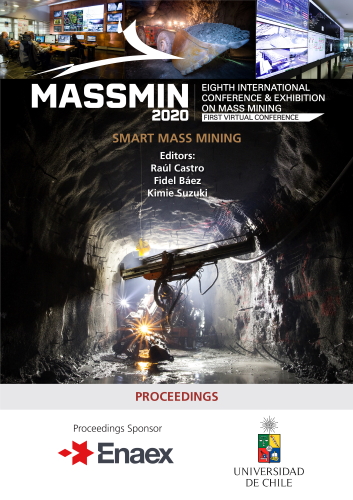From the long term planning to the operation. The role of the hydrogeological strategic plan for a large open pit

|
Authors: Sánchez, A; Calderón, J; Díaz, J |
This paper is hosted with the kind permission of Lulea University of Technology, International Conference & Exhibition on Mass Mining, 2024.
DOI https://doi.org/10.36487/ACG_repo/2063_107
Cite As:
Sánchez, A, Calderón, J & Díaz, J 2020, 'From the long term planning to the operation. The role of the hydrogeological strategic plan for a large open pit', in R Castro, F Báez & K Suzuki (eds), MassMin 2020: Proceedings of the Eighth International Conference & Exhibition on Mass Mining, University of Chile, Santiago, pp. 1412-1420, https://doi.org/10.36487/ACG_repo/2063_107
Abstract:
The importance of a proper hydrogeological strategic plan in a massive open pit operation is critical considering the deepening of the pits, which implies large and high slopes increasing the pore pressure resulting in potential slope instabilities and dewatering challenges for operating. In the life of mine planning cycle the hydrogeological condition must be incorporated from the uncertainty of the conceptual model to the dewatering day-to-day operation. In the case of Escondida Asset the strategic plan starts from a proper understanding of the hydrogeological conceptual model and uncertainties which conducts to a hydrogeological characterization plan as part of the life of the mine inputs; the results of numerical model for pore pressures to focus on the depressurization targets, which define the depressurization drilling campaigns and the short term activities; the consideration in the mine design, as a part of the mine plan, for depressurization and dewatering issues; and finally, the day to day control for dewatering. Normally, the dewatering strategic plan considers several cases as a sensitivity problem for slope stability and drainage issues. The added value of hydrogeological strategic plan is basically improving the reliability of the mine plan from the long term to the operation and develop de-risking for the business plan. With a proper understating of the hydrogeological issues through the years of the mine plan, avoid having non-planned problems impacting the operation and the planning process. Also is relevant the link and synergy that the hydrogeological strategic plan establishes between different disciplines, specifically, with structural geology and geotech who is basically one of the most important inputs for the large and massive open pit operation in the context of high pore pressures for the slopes and dewatering issues considering the hydrogeological strategic plan as a continuous improvement process aligned with the mine planning cycle.
References:
Read, J & Beale, G 2013, ‘Guidelines for Evaluating Water in Pit Slope Stability’, CSIRO, Australia.
Read, J & Stacey, P 2009, ‘Guidelines for Open Pit Slope Design’, CSIRO, Australia.
© Copyright 2025, Australian Centre for Geomechanics (ACG), The University of Western Australia. All rights reserved.
View copyright/legal information
Please direct any queries or error reports to repository-acg@uwa.edu.au
View copyright/legal information
Please direct any queries or error reports to repository-acg@uwa.edu.au
